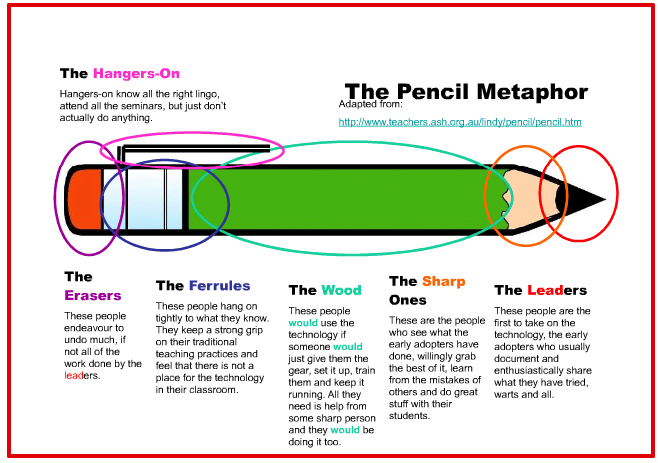I found this recent post on the msdn blog ( posted by Pip Cleaves) really interesting as it matches up the familiar SAMR model with the next generation of Microsoft products that are now being targeted at the education market. As someone who has been cynical and critical of Microsoft past offerings I find these new products e.g. Office Mix, very exciting and definitely believe they have place in every teachers ed tech toolkit.
The SAMR Model of technology integration is used by many teachers across the globe to ensure their use of technology leads to better learning outcomes for students. After reading lists of learning activities and apps sorted into this continuum using other platforms, we thought it might be nice to create a list of how Microsoft apps, services and software might fit into this popular model. Check out the ideas below and print out our handy infographic to inspire some ideas in your classroom this year.
For this model we have mapped each of the SAMR Levels to possible learning activities using our favourite Microsoft Tools for Learning:
S – Substitution
Doing the same thing, but using technology. Ask yourself if anything is better as a result of the use of technology?
- OneNote – Notetaking, planning, drafting, writing tasks and digital textbook
- Office Mix – Audio record a presentation and hand in via USB
- Office Sway – Create a presentations, write notes for a topic
- OneDrive – Take notes using browser apps, make summaries, create posters using PowerPoint
- Win 8 Apps – Human Anatomy 3, Periodic Table, TedED, Wikipedia, Research Apps
A – Augmentation
Doing things better through technology. Ask yourself if the task is improves as a result of the use of technology.
- OneNote – Create a Choose Your Own Adventure Story, Sync OneNote across devices
- Office Mix – Create and share an Office Mix as a presentations, Use Office Mix to create screencasts
- Office Sway – Create and share a Sway as a Project Presentation for feedback from teacher or peers
- OneDrive – Use Excel Surveys for data collection and analysis, group note taking and summaries through OneDrive browser apps
- Win 8 Apps – Kids Storybuilder, Wolfram Alfa Apps, Flashcard Apps
M – Modification
Doing things differently because of technology. Is learning better because of the technology?
- OneNote – Audio feedback in OneNote, Portfolio creation, Inking in OneNote, using Class OneNote Creator Tool
- Office Mix – Creation of Tutorials, Creating videos to explain thinking, adding Office Mix to a portfolio
- Office Sway – Multimodal presentation with hyperlinks, record audio overSway using Office Mix screencast
- Win 8 Apps – iXplain, Explain Everything, Drawboard PDF, Socrative, TouchReTouch, Arcsoft Showbiz, Zoe Trope
R – Redefinition
Inconceivable without technology. Doing things in new ways as a result of the technology. How is this activity uniquely possible as a result of the technology?
- OneNote – Audio Feedback in Portfolios, Collaborative Note taking and writing, OneNote + Lync for Global project work, Class OneNote Creator for assessment and feedback
- Office Mix – Create an interactive presentation to tap into analytics to map students understanding, create an interactive presentation with a quiz for peers
- Office Sway – Multimodal presentation created with a variety of ‘app smashed’ products, creation of a multimedia presentation, share with global peers through social media
- OneDrive – Global project organisation and actualisation, Collaborative feedback and editing, shared folder as resource library
- Win 8 Apps – Nearpod, Fluid Math, CreateBook, Coaches Eye


















